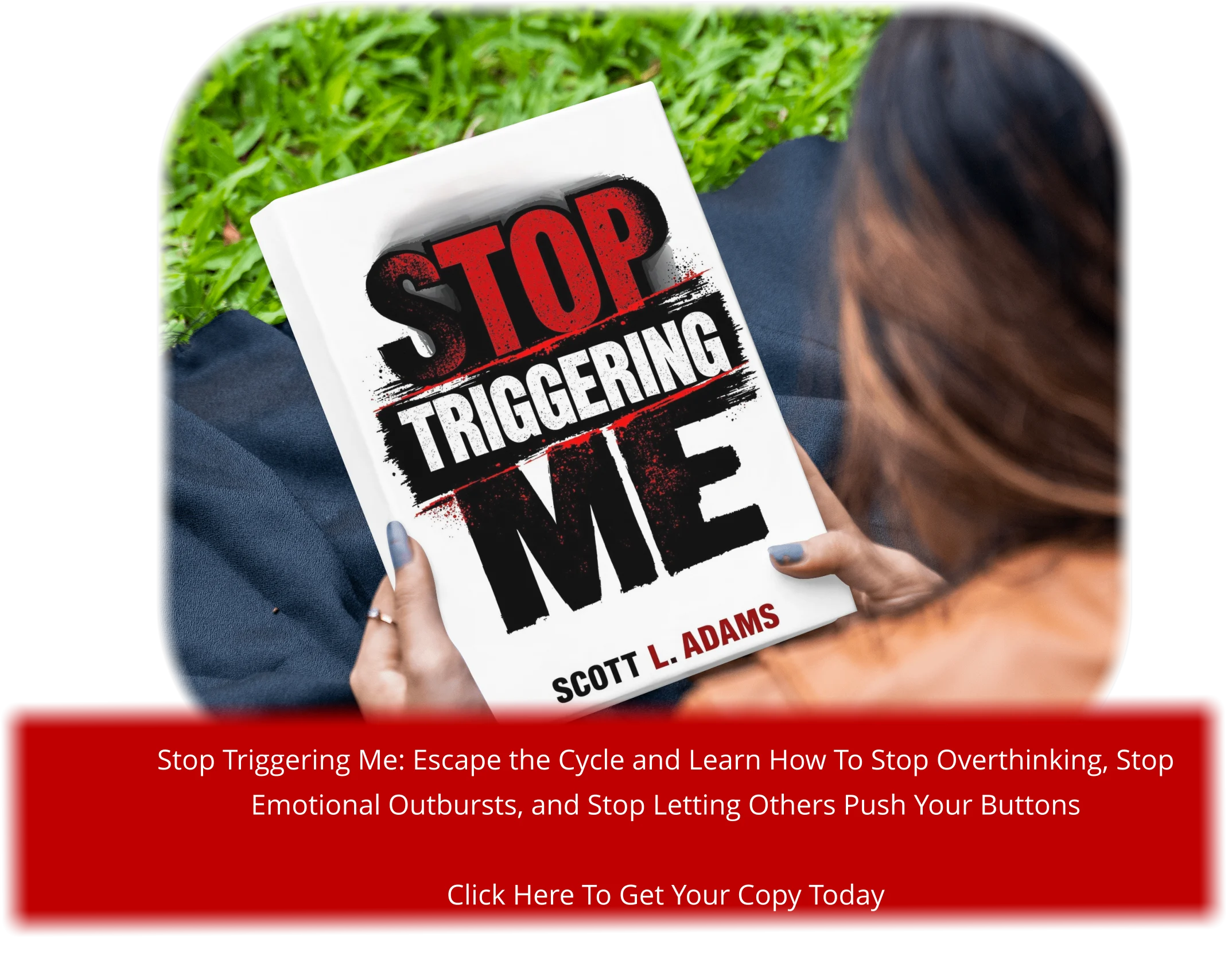I’ve discovered that being present in the moment can be a game-changer for men dealing with the pressures of modern life. With the constant demands on our time and energy, it’s easy to get caught up in thoughts about the past or worries about the future.
As someone who’s explored mindfulness meditation, I can attest that it’s not just another wellness trend – it’s a powerful practice that can transform daily life. By focusing on the present moment, we can reduce stress and improve our mental clarity.
In this guide, I’ll walk you through what mindfulness meditation is, why it’s beneficial, and how to start a simple practice that fits into your busy life.
Key Takeaways
- Discover the benefits of mindfulness meditation for men.
- Learn a simple practice to reduce stress and improve focus.
- Understand how to cultivate a healthier relationship with your thoughts.
- Find out how to fit meditation into your busy schedule.
- Start experiencing the benefits of being present in your daily life.
Understanding Mindfulness Meditation
To truly benefit from mindfulness meditation, it’s essential to understand what it entails. Mindfulness meditation is a practice that involves training your mind to be present and fully engaged with whatever you’re doing in the moment.
What Is Mindfulness?
Mindfulness is about observing your thoughts, sensations, and emotions with curiosity and kindness, using your breath as an anchor. It’s not about achieving a specific state but rather about cultivating awareness of your current experience. By doing so, you develop a deeper understanding of yourself and your reactions to various situations.
This practice encourages you to approach your experiences with warmth and kindness, both to yourself and others. It’s a powerful tool for developing mental clarity and emotional resilience.
How Meditation Differs from Relaxation
While relaxation is often a byproduct of meditation, the two are distinct. Meditation isn’t just about calming the body; it’s an active process of observing your mind’s patterns with curiosity. Unlike relaxation techniques that focus solely on calming the body, meditation builds mental fitness by training your attention and awareness.
Meditation is more like a workout for your brain than a spa treatment. It involves gently bringing your mind back when it wanders, which strengthens your mental muscles over time. Understanding this distinction can help you approach meditation with the right mindset, avoiding frustration and cultivating a more consistent practice.
Why Men Should Practice Mindfulness Meditation
I’ve discovered that incorporating mindfulness meditation into my daily routine has been a game-changer for my mental and physical health. As men, we’re often encouraged to push through challenges without considering the toll on our wellbeing. However, mindfulness meditation offers a powerful tool to enhance both mental and physical health.
Transforming Mental Health
Mindfulness meditation has been shown to have a positive impact on mental health by reducing stress and anxiety. Regular meditation practice can lead to a decrease in stress levels, promoting a sense of calm and clarity. Some benefits include:
- Reduced symptoms of anxiety and depression
- Improved emotional regulation
- Enhanced focus and concentration
By incorporating mindfulness into daily life, men can better manage the pressures of modern living, leading to an overall improvement in mental wellbeing.
Enhancing Physical Health
The benefits of mindfulness meditation extend beyond mental health to positively impact physical wellbeing. Regular meditation has been linked to lower blood pressure, reduced chronic pain, and a stronger immune system. Athletes and individuals with active lifestyles can particularly benefit from mindfulness practices, as they can enhance performance and aid in recovery.
Some of the physical health improvements associated with regular meditation include:
- Lower blood pressure and reduced risk of heart disease
- Improved sleep quality
- Enhanced immune function
By adopting a regular meditation practice, men can experience these benefits firsthand, leading to a healthier, more balanced life.
The Science Behind Mindfulness Meditation for Beginners
Research has shed light on the powerful effects of mindfulness meditation on our overall well-being. As we explore the science behind this practice, it becomes clear that its benefits extend far beyond relaxation.
Neurological Changes
Mindfulness meditation induces significant neurological changes. Studies have shown that regular practice can alter the structure and function of the brain, leading to improved emotional regulation and reduced stress. One key finding is that meditation reduces activity in the default mode network, the part of the brain responsible for rumination and worry.
Stress Reduction Mechanisms
So, how exactly does meditation reduce stress? The answer lies in its impact on our physiological response to stress. Regular practice lowers cortisol levels in the bloodstream, leading to a calmer state even in challenging situations. Moreover, meditation activates the parasympathetic nervous system, counteracting the fight-or-flight response that many men experience throughout the day.
- Regular practice lowers cortisol levels, reducing anxiety and promoting relaxation.
- Mindfulness meditation activates the parasympathetic nervous system, calming the body and mind.
- By reducing activity in the default mode network, meditation helps minimize rumination and worry.
By understanding these mechanisms, we can appreciate why meditation is an effective tool for managing chronic stress and promoting overall well-being.
Creating Your Meditation Space
I’ve found that having a dedicated space for meditation helps me establish a consistent practice, and it’s something I highly recommend. This space doesn’t have to be elaborate or large; what matters most is that it’s comfortable and conducive to relaxation.
Finding the Right Environment
When it comes to creating a meditation space, the environment is crucial. You need a spot that is quiet and warm, where you can sit without distractions. This could be a corner of your bedroom, a section of your living room, or even a spot outdoors if the weather permits. The key is to find a place where you feel comfortable and can maintain a straight posture.
Essential and Optional Equipment
You don’t need much to start meditation. A simple, quiet spot with a cushion or a chair is enough. Some people prefer to sit on a yoga mat or a towel on the floor, while others like to use a chair or even their bed. If you choose to sit on the floor, a meditation cushion can help maintain the correct posture for your body. Additionally, a timer can be helpful to keep track of your session without constantly checking the clock. Some men also find it helpful to include a few meaningful objects in their meditation space to create a calming atmosphere.
Basic Mindfulness Meditation Technique
The basic mindfulness meditation technique is the cornerstone of a successful practice. As you start your mindfulness journey, understanding this technique is crucial for reaping its benefits.
Proper Posture and Position
To begin, find a comfortable position, either sitting or lying down, with your back straight. You can close your eyes or keep them lightly closed, focusing on your breath. Maintaining a relaxed yet alert posture is key to a productive meditation session.
Breathing Techniques
Focus on your breath, feeling the sensation of the air entering and leaving your nostrils. When your mind wanders, gently bring your attention back to your breath without judgment. This process helps strengthen your focus and calm your mind.
Managing Thoughts and Distractions
Inevitably, your attention will leave the breath and wander to other places. When you notice that your mind has wandered—in a few seconds, a minute, five minutes—simply return your attention to the breath. Don’t judge yourself or obsess over the thoughts’ content you find yourself lost in. Here are some key points to remember:
- Managing thoughts during meditation isn’t about eliminating them; it’s about changing your relationship with them by observing without getting caught up in their content.
- Common distractions include planning thoughts, replaying past events, physical sensations, or environmental noises—none of these mean you’re “failing” at meditation.
- Think of the process—noticing wandering and returning focus—as the actual “rep” in your mental workout, strengthening your attention muscles each time you do it.
By practicing this technique, you’ll become more aware of your thoughts and learn to observe them without getting caught up. With time, you’ll notice a significant reduction in mental clutter and an improvement in your overall mental clarity.
Step-by-Step Guide to Your First Meditation Session
Your first meditation session is a step towards a more mindful you. As you begin, it’s essential to understand the process and what to expect. Meditation is a practice that involves training your mind to focus and be present.
Setting Intentions
Before you start meditating, take a moment to set your intentions. This could be as simple as deciding to focus on your breath or to cultivate a sense of calm. Setting an intention helps guide your meditation practice and gives you a clear direction.
The 5-Minute Starter Practice
For your first session, start with a manageable duration, such as 5 minutes. Find a comfortable position, either sitting or lying down, and close your eyes. Begin by focusing on your breath, noticing the sensation of the air entering and leaving your nostrils. When your mind wanders, gently bring your attention back to your breath without judgment. As you meditate, be aware of your body and its sensations.
Ending Your Session Properly
When you’re ready to end your session, don’t rush. Take your time to slowly open your eyes, and take a few deep breaths. Notice how you feel and the sensations in your body. Gradually bring your attention back to your surroundings, and take a moment to acknowledge your practice. This gentle transition helps you integrate the mindfulness you’ve cultivated into your daily life.
Common Challenges for Male Beginners
When men first begin meditating, they may struggle with feelings of restlessness and doubts about the effectiveness of their practice. This is a normal part of the process, and understanding these challenges can help you overcome them.
Restlessness and Impatience
Many men find it difficult to sit still for even a short period, feeling an intense urge to be doing something productive. This restlessness can stem from a culture that often values action over inaction. To combat this, try to view meditation as a form of mental training, where you’re developing your ability to focus and be present.
Dealing with Wandering Thoughts
It’s common for the mind to wander during meditation. When this happens, gently acknowledge the thought and refocus on your breath without judgment. With consistent practice, you’ll find it easier to manage wandering thoughts.
Overcoming the “Not Doing Anything” Feeling
Some men feel that they’re not accomplishing anything during meditation, which can lead to feelings of guilt. However, remember that meditation is an active process that enhances your mental clarity and focus, ultimately improving your life. By reframing meditation as a valuable time for mental recovery, you can overcome this feeling.
Beyond the Basics: Different Meditation Styles
As you become more comfortable with basic meditation, you may find yourself drawn to exploring different styles that can enhance your practice and deepen your mindfulness experience.
Exploring various meditation techniques can help you discover what works best for you. Here are a few styles you might consider:
Body Scan Meditation
Body scan meditation involves lying down or sitting comfortably and bringing your attention to different parts of your body, starting from your toes and moving up to the top of your head. This practice helps you cultivate awareness of physical sensations and release tension.
Walking Meditation
Walking meditation combines the benefits of physical activity with the mindfulness of meditation. You focus on the sensation of each step, the movement of your legs, and the rhythm of your breath, creating a unique experience that can be very grounding.
Loving-Kindness Meditation
Loving-kindness meditation, also known as metta, involves silently repeating phrases that offer kindness to yourself and others. This practice can help reduce negative emotions like anxiety and depression, while increasing positive feelings such as happiness and joy. You can start by directing kindness towards yourself, then expand to loved ones, neutral people, and eventually all beings.
By incorporating these different styles into your meditation practice, you can enrich your experience and enjoy the benefits of a more nuanced and varied approach to mindfulness.
Building a Consistent Meditation Practice
To truly benefit from meditation, building a regular practice is essential, and there are several strategies to help you achieve this. Consistency is key to experiencing the full range of benefits that meditation has to offer.
Creating a Sustainable Routine
Establishing a routine that fits into your lifestyle is crucial for maintaining a consistent meditation practice. I recommend starting with a manageable daily time commitment, even if it’s just a few minutes, and gradually increasing it as you become more comfortable with the practice. It’s also helpful to meditate at the same time each day to make it a habit.
Using Technology and Apps to Stay Consistent
In today’s digital age, there are numerous apps designed to support your meditation journey. Popular apps like Headspace, Calm, Insight Timer, and Waking Up offer guided meditation sessions specifically tailored for beginners. These apps not only provide structure and guidance but also track your progress, offer reminders, and help you stay consistent with your practice.
- Meditation apps can be particularly helpful for men beginning a practice, as they provide structure, guidance, and accountability in a convenient package.
- Many apps include features like progress tracking, reminders, and meditation timers that help maintain consistency.
- For those who appreciate data, some apps provide metrics on your meditation streak, total minutes meditated, and even time-of-day patterns to optimize your practice.
Integrating Mindfulness Into Daily Life
Mindfulness isn’t just about meditation; it’s about bringing awareness into your everyday activities. As you’ve established a meditation practice, you’re now ready to weave mindfulness into the fabric of your daily life.
Mindful Moments Throughout the Day
You can practice mindfulness at any moment by paying attention to your breath, body sensations, or surroundings. For instance, taking a few deep breaths before a meeting or while waiting in line can help you stay grounded. Mindfulness boosts creativity and can be applied to various activities like writing, drawing, or even coloring. By being more mindful, you can enhance your focus and productivity.
Mindfulness in Relationships and Work
Bringing mindfulness into your relationships can transform your interactions by helping you become more present with others. Practice mindful listening by giving your full attention to the speaker and gently bringing your focus back when your mind wanders. At work, taking a mindful minute between tasks can reset your attention, improving focus and reducing stress. Mindfulness can also help you stay grounded in your values during challenging conversations, leading to more productive outcomes.
By integrating mindfulness into your daily routine, you can experience significant benefits in both personal and professional spheres. Whether it’s through mindful moments, improved relationships, or enhanced work performance, the practice of mindfulness can lead to a more balanced and fulfilling life.
Conclusion
As you start practicing mindfulness meditation, you’ll begin to notice a positive transformation in your life. With consistent practice, you’ll cultivate a calmer mind and a healthier body. Trust the process, and you’ll see the benefits of meditation for yourself.









